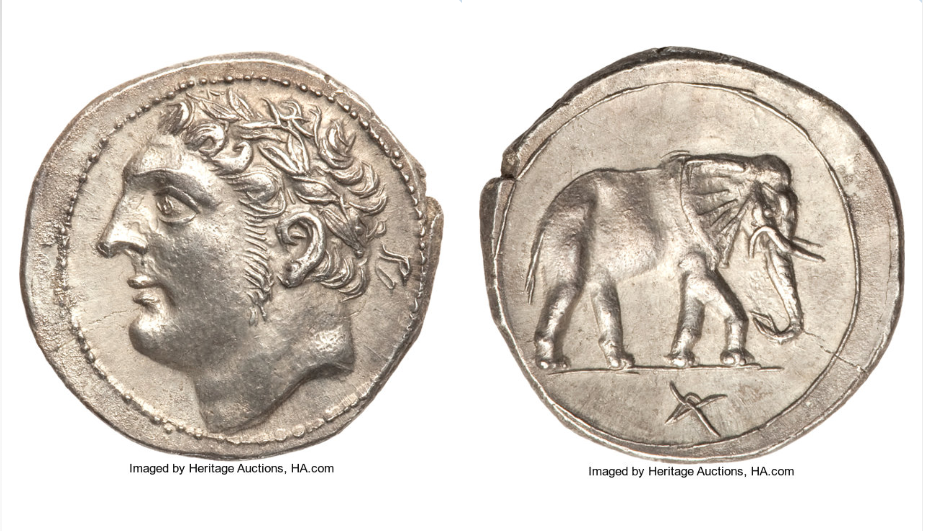The Hannibal Coin from Carthage
Unlike other ancient civilizations, little remains of Carthage. There are few works of art, literature, or architecture to tell the story of the Carthaginians. Some coins exist, although they are expensive when they come up for auction.
Coins bearing a horse or local flora and fauna were minted in Carthage since the fifth century BC. The bronze coin illustrated is from 400-350BC. It illustrates key design elements of the coins of Carthage. The obverse is a wreathed head of Tanit, the goddess of fertility, and the reverse is a horse standing right with a palm tree in the background.
Military Legacy of Carthage
Located on the north coast of Africa, in what is now Tunisia, Carthage was once one of the most important trading hubs on the Mediterranean. Nonetheless, the Phoenician city-state was a late entrant into the production of coins, relying on bartering rather than coinage for centuries. Like many ancient civilizations, the need to pay mercenaries prompted Carthage to begin minting coins, with the first coins produced in Sicily in the late 5th century BCE.
Much of what we know about Carthage comes from the Greeks and Romans, who were their most bitter rivals. Their writings depict the Carthaginians as brutal savages. However, even Cicero acknowledged that “Carthage would never have held an empire for six hundred years had it not been governed with wisdom and statesmanship.”
Carthage fought several wars with the Roman Republic, known as the Punic Wars. Hannibal Barca made a name for himself during the Second Punic War. Although the Romans were ultimately victorious, Hannibal took the fight to Italy, crossing the Alps on armored elephants and defeating all the Roman armies in his path. He is widely considered one of the greatest military strategists in history.
The Third Punic War resulted in the complete destruction of the city of Carthage. After finally defeating Carthage in Spain, the Romans invaded North Africa in 202 BCE. While Hannibal escaped, he later died in exile.
Carthage Coinage
Carthage issued ½-shekel, shekel, 1⅔-shekel, double shekel, and triple shekel coins. The empire minted coins using a variety of metals, including gold, silver, electrum, bronze, and billon.
The type of metal used also reflected the success of the Carthaginian army. During the First Punic War, Carthage issued larger denominations, which were used to pay its mercenaries. However, by the time the war was over, its reserves were decimated, forcing Carthage to use billion.
As with most ancient coins, the designs evolved over time and varied based on where they were minted. For centuries, the obverse of most Carthaginian coins featured Tanit, the goddess of fertility. The reverse images included a standing horse and palm tree (or a combination of the two), both considered symbols of Carthage.
During the Second Punic War, precious metals plundered from Rome were used to mint coins featuring a male god. Scholars largely believe that the head depicts Herakles-Melqart, a Semitic deity inherited by the Carthaginians from their Tyrian roots. However, some theorize that the figure is Hannibal in the guise of the god. The reverse features a war elephant, as used by Hannibal to cross the Alps. These coins are particularly prized by collectors because of the Hannibal/Punic Wars connection.
The coins of Carthage featured sparse inscriptions, with its gold coins including none at all.

